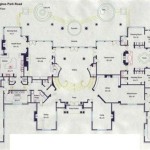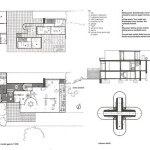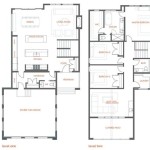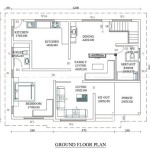Essential Aspects of House Plan Small Lot
In the realm of real estate, utilizing smaller lots has become a popular trend, particularly in urban areas where space is at a premium. Designing a house plan for a small lot requires careful consideration of various factors to ensure functionality, aesthetics, and adherence to building codes.
1. Optimizing Space:
When working with a small lot, maximizing space is paramount. Consider using a compact footprint, multi-story designs, and open floor plans to create the illusion of spaciousness. Built-in storage solutions, such as cabinets, drawers, and shelves, can further enhance space utilization.
2. Natural Lighting:
Introducing ample natural light into your home not only enhances its ambiance but also reduces energy consumption. Large windows, skylights, and sliding glass doors can bring in sunlight while providing a connection to the outdoors. Encourage cross-ventilation to maintain a comfortable indoor environment.
3. Outdoor Living:
Even on a small lot, incorporating outdoor living spaces is essential for relaxation and recreation. Utilize vertical space with balconies, roof terraces, or trellises. Consider adding a small patio or deck to extend your living area outdoors.
4. Curb Appeal:
First impressions matter. Design a house plan that complements the surrounding neighborhood while showcasing your personal style. Incorporate architectural details, landscaping, and a well-maintained facade to enhance curb appeal.
5. Zoning and Setbacks:
Before finalizing your house plan, consult local building codes and zoning regulations to ensure compliance. These regulations may specify minimum setbacks from property lines, height restrictions, and other requirements that impact the design and placement of your home.
6. Site Orientation and Topography:
Understand the orientation of your lot in relation to the sun's path and prevailing winds. Consider the topography and any potential slopes or natural features that may influence the design and functionality of your home.
7. Sustainable Design:
Embrace sustainable design principles to reduce your environmental impact and energy costs. Consider using energy-efficient appliances, installing solar panels, and incorporating green building materials. Passive design strategies, such as cross-ventilation and proper insulation, can further enhance energy efficiency.
8. Cost-Effective Construction:
Building on a small lot often involves cost considerations. Opt for affordable building materials, employ efficient construction techniques, and consider prefabricated components to save time and money.
9. Professional Design:
While online resources can provide inspiration, it is recommended to consult with a qualified architect for a custom house plan. They can translate your design vision into a functional and code-compliant plan that meets your specific needs and the constraints of your small lot.
10. Personalization and Customization:
Your house plan should reflect your unique style and preferences. Include features that enhance your daily life, such as a home office, a cozy reading nook, or a well-equipped kitchen. Consider adding custom touches to make your home a true reflection of yourself.
Designing a house plan for a small lot requires a balance of creativity, functionality, and attention to detail. By adhering to these essential aspects, you can create a comfortable, aesthetically pleasing, and space-efficient home that meets your needs.

Small Lot House Plans Building Buddy Narrow

Jasmine Small Lot House Plans Narrow Model Plan Floor

2 Story House Plans For Narrow Lots Blog Builderhouseplans Com

Small House Plans With Garage For Narrow Lots Under 26 Ft Wide

White Riceflower Small Lot House Plans Narrow Container

A Skinny Solution For Small House Floor Plans

21 Small Lot House Floorplans Ideas Plans Floor How To Plan

Plan 056h 0005 The House

Plan 36419tx Elegant House For Narrow Lot Plans New

Crimson Bottlebruch Small Lot House Plan Building Buddy








